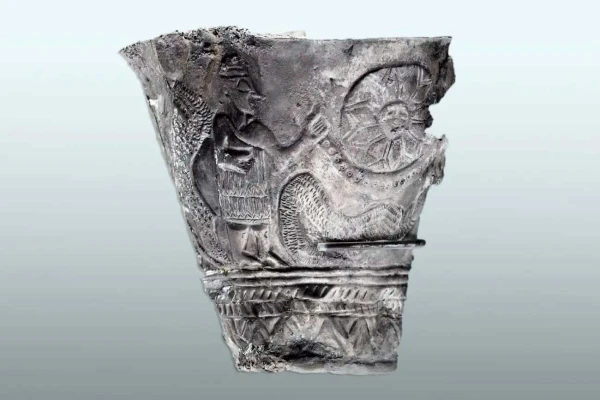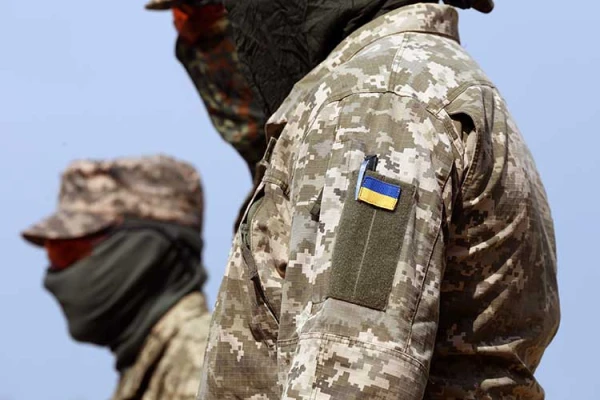
A huge serpent dominates the cup, embodying the primal destructive forces.
Just over 50 years ago, near modern Ramallah on the western edge of the Fertile Crescent — a region where ancient civilizations thrived — archaeologists discovered a burial site containing dozens of artifacts. Among the finds was a silver vessel, eight centimeters tall, named after its place of discovery — the "Ain Samiya" cup. Its surface was adorned with two images that caught the researchers' attention.
At that time, an international group of scientists attempted to decipher the scenes depicted on the walls of the cup and suggested that they were dealing with themes from the Babylonian epic "Enuma Elish." In this myth, the god Marduk defeats the monstrous Tiamat, embodying the primordial ocean of chaos, and creates the heavens and the earth from her body.
However, the hypothesis was met with skepticism. The cup was made around 2300 BC, while the text of "Enuma Elish," according to archaeologists, appeared a thousand years later. Moreover, there is not a single scene on the vessel that resembles a fierce battle. Therefore, the scientists could not find a convincing explanation, and the artifact became an archaeological mystery for decades.

The study of the cup was resumed by a team of archaeologists led by Eberhard Zangger from the international non-profit organization for Luwian Studies. Using modern technologies, the scientists managed to restore and "read" the scenes depicted on the cup.
Zangger and his colleagues believe that the previous group of specialists was thinking in the right direction but made mistakes in the details. The cup indeed depicts a creation myth, but it is much older than the Babylonian one and is based not on war but on the gradual transformation of chaos into order.
According to the analysis by Zangger's team, the first scene represents the realm of Chaos. It is dominated by a huge serpent, the embodiment of primal destructive forces. Opposing it is a strange creature — a chimera with a human body and animal legs. This deity has not yet attained its true form (it has not separated from the animal), it is merged with nature and therefore weak. At its feet is a small circle resembling a flower bud. According to the specialists, this represents the sun, but it does not yet possess power and does not illuminate the world.
The second scene depicts the moment when the world gains order. Chaos disappears, and the triumph of Cosmos — the ordered world — begins. Chaos is defeated, but not in battle, rather as a result of transformation. The deity has shed its animal essence and appears in a pure, human form.
One such figure has been preserved on the cup, but researchers believe that there were originally two. The shape of the drawing and the arrangement of elements indicate that the composition was intended to be symmetrical. Only traces of lines and contours of the "second" figure remain, almost erased due to the cup cracking over time and losing part of its surface.
Powerful gods raise a large circle with a smiling face — this is the shining, powerful sun. It floats across the sky in a symbolic "heavenly barque." The defeated serpent of Chaos now lies below, under the feet of the gods and the luminary, symbolizing the lower, underworld. Thus, according to the presented myth, the great separation occurred: the heavens were distanced from the earth, light from darkness, order from chaos.
"Before us is a genius drawing. With simple lines, the master told an incredibly complex and profound story. For the first time, we see how people of the Bronze Age envisioned the birth of the Universe," Zangger explained.
The team's hypothesis is also supported by written sources. Cuneiform tablets created during the same period in Mesopotamia contain texts about how the gods "separated the heavens from the earth." However, the Ain Samiya cup gives a visual representation to these lines. It transforms an abstract concept into a vivid and understandable image.













Leave a comment